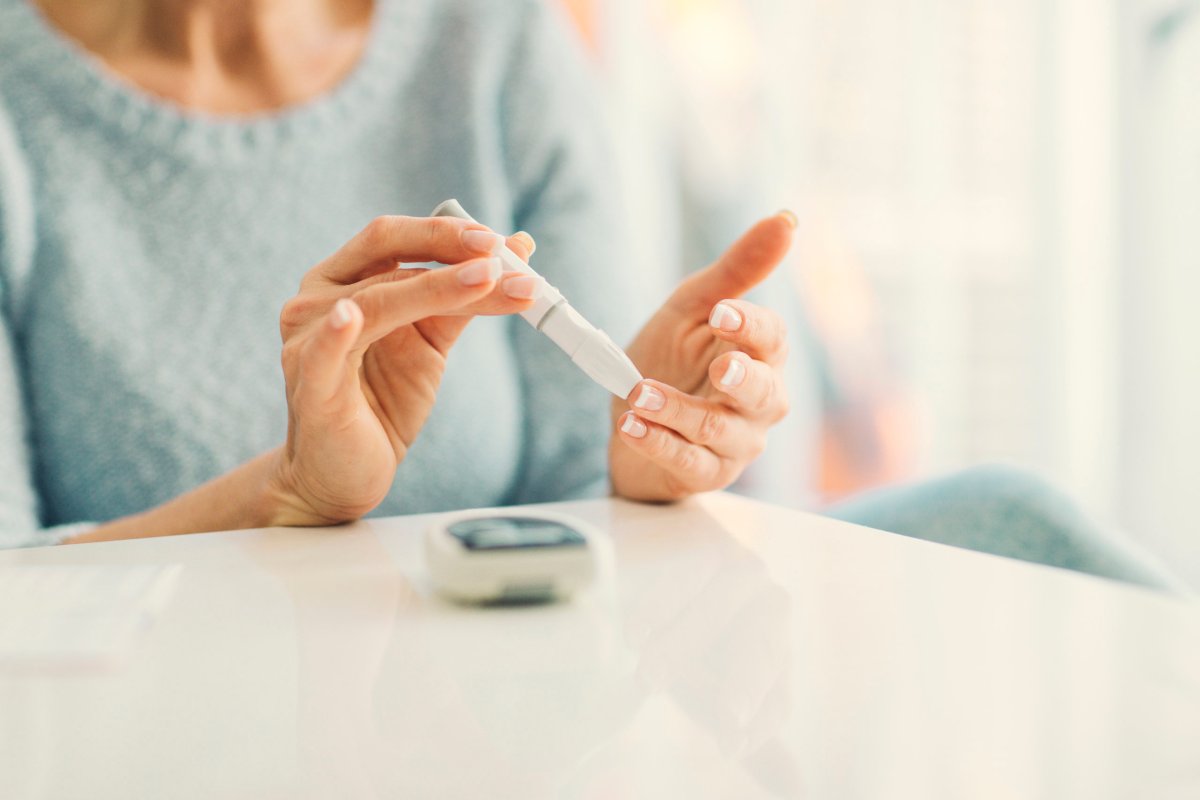Diabetes has reached epidemic levels in the United States: According to the Centers for Disease Control and Prevention, over 29 million Americans have diabetes, and 86 million others have pre-diabetes, a condition that increases the risk of Type 2 diabetes and other illnesses. Monday, Nov. 14, is World Diabetes Day. Mount Sinai’s Diabetes Institute will hold a free education and information event open to the public, during which it will offer risk assessments, raffles and a fitness class led by the 92nd Street Y. We talked to Dr. Khadeen Cheesman, assistant professor of medicine, endocrinology, diabetes and bone disease at Mount Sinai Health System, about the differences in the two types of the disease, what you can do to prevent it and how to treat it if you have it.
Ask Mount Sinai: Know your risk of diabetes

ISTOCK
What is the difference between Type 1 and Type 2 diabetes?
A patient with Type 1 diabetes cannot produce any insulin at all. Insulin is a hormone that we need to control the glucose levels in our body. The glucose level goes up when we consume carbohydrates, and food.
Type 2 diabetics produce some insulin, and may produce excess insulin, but your body is resistant to that insulin, and therefore cannot use it very effectively—resulting in high blood sugar.
Generally speaking, people with Type 1 diabetes tend to be younger. They can be diagnosed anywhere from birth, and they tend to be less than 40 years old, but there are cases where you diagnose Type 1 diabetes in people up to the age of 70 years. So it’s not impossible to be old and be diagnosed, it’s just rare.
Type 2 diabetics tend to be diagnosed as adults. But now we’re actually seeing a larger proportion of pediatric patients, because of the obesity epidemic, being diagnosed with Type 2 diabetes. The only medication for Type 1 diabetes is insulin, which is injection. Type 2 diabetes can be controlled with some oral medication, diet and exercise. There is a genetic factor for both Type 1 and Type 2.
Who is at greatest risk?
The people most at risk for diabetes are people with a family history of Type 2 diabetes. People who are physically inactive or active less than three times a week. Age is also a big risk factor for diabetes.
What are the symptoms?
You get increased urination during the day and night. You’re thirsty, which actually leads to a vicious cycle: People say they feel thirsty so they drink Gatorade, and they drink Vitamin Water, and that contains a lot of carbohydrates and sugar, and it makes everything worse. You feel tired. You get blurry vision because the extra glucose leads to eye swelling, so people complain of blurry vision.
You also lose weight. Most people, even those that are overweight, come to you saying, “I’m not even trying, but I’ve lost 10 pounds in the last two months.” But if you screen, and follow up with your PCP regularly, you can hopefully get a diagnosis of prediabetes or diabetes, or even better, no diagnosis at all, and then you can delay or prevent those symptoms from occurring.
Right. Because often times, by the time you’re seeing symptoms it’s …
It’s too late. It’s very late. This is the thing. It’s why most people who come to us with symptomatic, they already need to be started on insulin.
How do you avoid or delay the onset of Type 2 diabetes?
First things first: activity, activity, activity. Everyone’s busy, it’s very hard I know. Especially with work, kids, studies, to exercise 30 minutes a day, five times a week. But you don’t have to join a gym. Simple things like taking your dog out for a walk. You can get off [the train] one or two stops earlier, even three stops earlier, and walk. By doing so, you can burn a significant amount of calories. There are free diabetes classes and nutrition classes at many academic centers.
The other important thing to know is, 25 percent of the population with diabetes don’t know they have it. Anyone over the age of 45 should be tested, absolutely. Or anyone with any at risk factors for diabetes … being overweight, [having] BMI over 25, family history, gestational diabetes, physically inactive, they should be tested.
What complications can develop from diabetes?
You can get heart attacks, and you can get strokes. These complications are not going to develop immediately, which is why it’s important to screen and diagnose people early. It may take about five to 10 years, but actually, studies have shown that a good percentage of patients already have these complications when they’re diagnosed with Type 2 diabetes. Other complications are microvascular; they affect the smaller vessels in our body. That includes kidney disease. It also leads to eye disease.
If you diagnose and treat it early enough, can you prevent these complications?
Absolutely. These complications occur because of uncontrolled diabetes. Once you can control the diabetes, whether that be, diet and lifestyle always has to be in there, and if that’s not enough, medication. Whether it be oral medication or insulin, you can absolutely prevent the progression of these complications.















